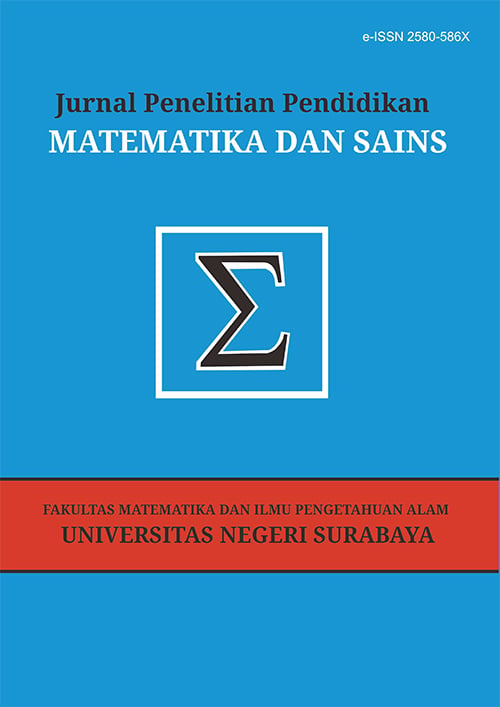Pengembangan Prototipe Alat Peraga Styrofoam Sirkulasi Peredaran Darah Manusia pada Pembelajaran IPA SMP
DOI:
https://doi.org/10.26740/jppms.v7n1.p29-36Abstract
One of the obstacles for students when studying the human circulatory system is the difficulty of students in distinguishing the large circulatory system and the small circulatory system. The purpose of developing the prototype of props is to make students better understand in real and detailed terms about the blood circulation process in the human body, so far, students have only used images as visual media, and students can be motivated and learning is not spared, so that student learning outcomes can improve. The purpose of making a circulatory system model of children's learning motivation is to provide a concrete picture of information and new ideas and unite the material that the teacher will convey to the knowledge that will be given to the child, so that the material presented by the teacher can be well received by students. Props are made using styrofoam material, which is designed in such an attractive way to be representative of human blood circulation. This research is part of design-research with small-scale class trials. A small-scale trial of a prop prototype involved seven junior high school students in Bojonegoro Regency, East Java. After being given an explanation and participants tried the prop prototype, they were given a questionnaire to measure students' interest and motivation for the prototype props that had been developed previously. The result obtained from this study is that students have new experiences by learning to use props. Participants were very interested and motivated in using prototypes of human circulatory circulation styrofoam props. The results of small-scale trials indicate that the props prototypes that have been developed are suitable for use in large-scale trials.
Keywords: Teaching aids, blood circulation, science learning
References
A Crow & Crow, L. (1998). Psikologi Belajar. In Surabaya : Bina Ilmu.
Ahmadi, A & Widodo, S. (2004). Psikologi Belajar. In Jakarta: Rineka Cipta.
Arends, R, I. (2012). Learning to Teach. Ninth Edition. In New York: McGraw-Hill.
Carin, A. A. (1993). Teaching Science through Discovery. Macmillan Publishing Company.
Crow, A., & L, C. (1998). Psikologi Belajar. In Surabaya : Bina Ilmu.
Djaali. (2012). Psikologi Pendidikan.
Djamarah, S. B. (2002). Strategi Belajar Mengajar. Jakarta: Rineka Cipta.
Hasanah, S. R. (2012). Pengembangan Model Bahan Ajar Strategi Konflik Kognitif untuk Meningkatkan Kemampuan Berpikir Kritis Matematik Siswa SMP. FPMIPA UPI Bandung.
Hunaepi, Samsuri, T., & Afrilyana, M. (2014). Model Pembelajaran Langsung. Duta Pustaka Ilmu.
Hurlock, E. (1968). Developmental Psychology. 5 th ed. McGraw-Hill.
Kardi, S. (1997). Pengajaran Langsung. Unesa University Press.
Malikha, D. R. (2013). Pengaruh Strategi Problem Based Learning Berbantuan Multimedia dan Kemampuan Akademik terhadap Kemampuan Berpikir Kritis dan Hasil Belajar IPA Peserta didik Jurusan Mesin SMKN 1 Jenangan Ponorogo. Tesis, Malang: PSUM.
Mulyana, T. (2008). Pembelajaran Analitik Sintetik untuk Meningkatkan Kemampuan Berpikir Kritis dan Kreatif Matematik Siswa Sekolah Menengah Atas. FPS UPI Bandung.
Purwanto, M. N. (1988). Psikologi Pendidikan. Remadja Karya CV.
Sardiman, A. M. (2007). Interaksi dan Motivasi Belajar Mengajar. PT. Raja Grafindo Persada.
Slameto. (2003). Belajar dan Faktor-Faktor yang Mempengaruhinya. PT. Rineka Cipta.
Sudjana, N., & Rivai, A. (2003). Teknologi Pengajaran. CV. Sinar Baru.
Syah. (2003). Minat Belajar. Pustaka Belajar.
Tarigan, A. R. (2020). Meningkatkan Hasil Belajar Siswa dengan Menggunakan Alat Peraga Papan Berpaku pada Pokok Bahasan Persegi Siswa Kelas VI SDN 091380 SARIBUJANDI. Universitas Quality.
Wiarto, G. (2016). Media Pembelajaran Dalam Pendidikan Jasmani. Laksitas.
Winkel. (2004). Psikologi Pendidikan dan Evaluasi Belajar. Gramedia.
Downloads
Published
Issue
Section
 Abstract views: 431
,
Abstract views: 431
, PDF Downloads: 328
PDF Downloads: 328








